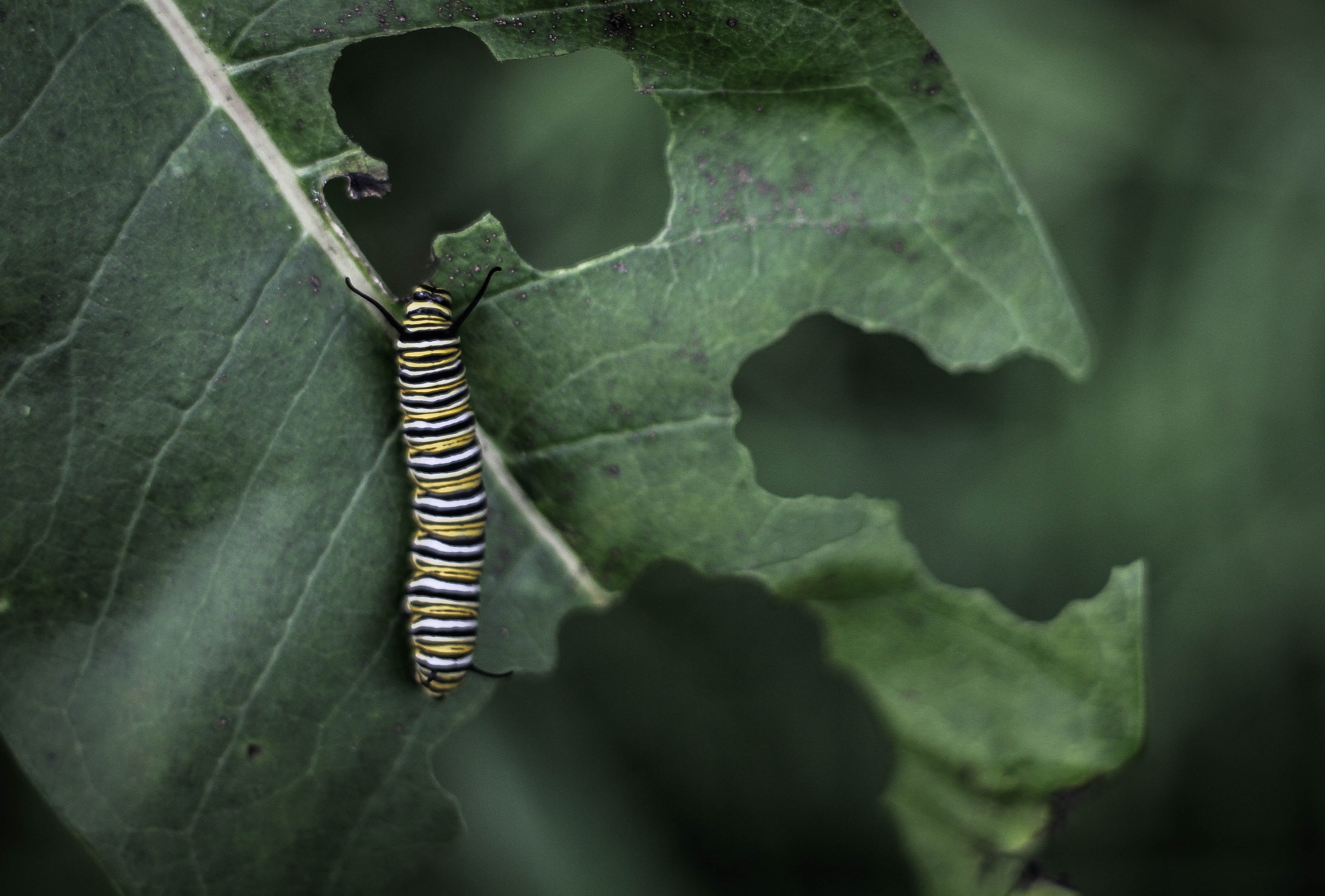5 Reasons There Are Holes In Your Plant Leaves
And how to fix it
Need help with your yard? Get your free quote today!
Get a Free Quote!
Why are there holes in my plant leaves?
Finding holes in your plant leaves can be disappointing. It is often unclear how the holes happened and is a frustrating task to figure out how to prevent it from continuing. Many holes are caused by insects and diseases which actually leave signs that can help you determine the cause.
Slugs and snails
One of the best ways to tell if your plants have fallen victim to slugs and snails is if you see no signs of bugs. Slugs and snails chew holes in leaves at nighttime, so going out at night with a flashlight will give you a good chance to see if they are the culprit. Vegetable gardens are most susceptible to slugs and snails.
Signs
Leaf holes from slugs and snails may appear large and irregular in shape with smooth edges. The hole will be in the centre of the leaf away from edges, and they may leave a trail of slime on the leaf.
Susceptible plants
Slugs and snails will go for many plants such as hosta, tomato, pepper, basil, strawberries, lettuce, and cabbage.
Prevention
Snails and slugs travel right on the ground so a ground barrier is effective to keep them away. Using sand or a layer of crushed eggshells should be effective to deter them, as that provides an unpleasant terrain.
Caterpillars
There is a lot of variety within the caterpillar family, making it much more difficult to tell if they are responsible for the holes in your plants leaves. Additionally, some feed strictly at night while others feed any time of day.
Signs
Some signs of caterpillar damage include varying hole sizes, rough edges on the holes, and the holes can appear anywhere on the leaf. There may also be dark fecal droppings on the plant as well. Another sign is that they sometimes go for other parts of the plants such as stems, flowers, buds, and roots.
Susceptible plants
There are few plants that won’t fall victim to caterpillars, but some plants that they enjoy are roses, basil, tomato, hydrangea, apple, willow, cherry, and much more.
Prevention
Like slugs and snails, caterpillars move very close to the ground so crushed eggshells can also work for the same reasons. You may also use insecticide on caterpillars, be sure to read the instructions on the bottle carefully for proper use.
Fungal disease
Holes in leaves can also be caused by diseases, such as a fungal disease.
Signs
Holes from fungal diseases will actually start as yellow or discoloured spots before the holes form. As the disease grows, the spots will turn brown and will quickly turn into holes. Once the spots become holes you will still be able to see discolouration on the edges.
Susceptible plants
All types of plants can fall victim to fungal diseases, especially when the plant is overcrowded with limited air circulation and too much moisture.
Prevention
Fungal diseases thrive in dark and moist locations so make sure your plants have plenty of light, space to grow and avoid overwatering. There are fungicide products available to help prevent and control fungal diseases. If you choose to use a fungicide be sure to follow directions on the label for safe use.
Sucking insects
Sucking insects create holes by not eating the leaves but by sucking out the nutrients. Aphids, stink bugs, and squash bugs are common sucking insects.
Signs
Since the insects are sucking nutrients from the leaves, the damage is usually found on new growth. There may be very tiny holes that appear as yellow spots, and entire leaves may become discolored.
Susceptible plants
Many plants are susceptible to sucking insects such as kale, roses, hydrangeas, melons, tomato, and so much more.
Prevention
Prevention of sucking insects can be difficult. The best way of prevention is regularly checking your plants so you can take action as soon as you spot any trouble. The use of an insecticide will be an effective method to control these pests, and sometimes a simple spray of water with the garden hose will be enough to get rid of them.
Chewing insects
Although caterpillars are chewing insects, once they become adults, they no longer chew leaves. All other chewing insects will continue eating leaves when they’re adults. Some chewing insects include beetles, earwigs, moths, and crickets.
Signs
Since there are so many different chewing insects, there are many signs. These signs include small and diverse holes, the edges of the holes are rough, and the holes will first appear along the edges of the leaf before moving towards the centre.
Susceptible plants
No plants are safe from chewing insects.
Prevention
Similar to sucking insects, prevention is difficult, but the best method is to regularly check your plants for signs of damage. Insecticide can be used to treat chewing insects, or a spray of water with your garden hose may be effective in small cases.
